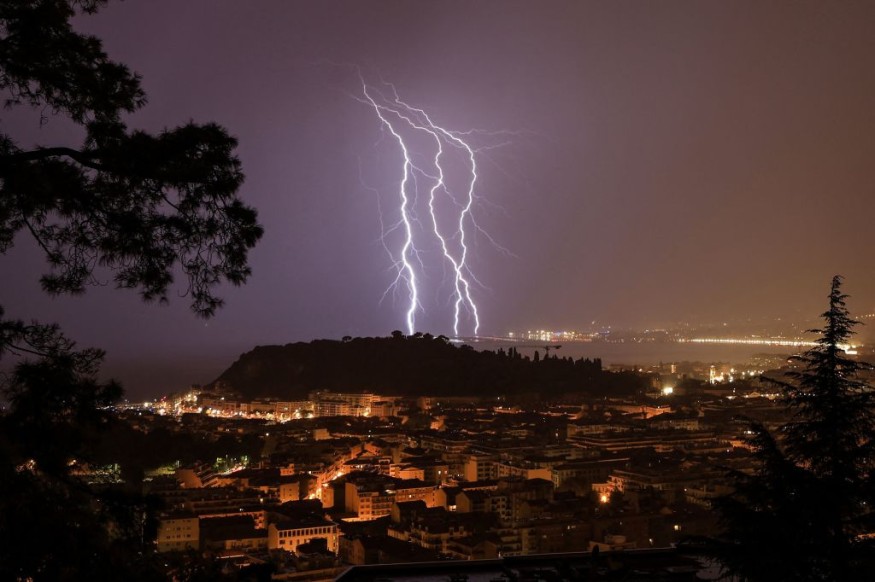
Two white-blue blobs of light can be visibly seen in the Earth's atmosphere in a photo shared by NASA's Earth Observatory.
The 'mysterious' blue blobs were seen hanging around in the night sky captured by an astronaut aboard the International Space Station (ISS) passing over Southeast Asia, NewsWeek reported. One is located over the Gulf of Thailand, and the other far on the horizon near the South China Sea.
While 'mystical' as they appear, the two blobs are believed to be a result of two separate phenomena: lightning and the moon. As annotated by the NASA Earth Observatory, there is a lightning storm over the Gulf of Thailand, while the Moon appears just above Earth's limb on the upper right edge.
Lightning strikes are usually not visible from the ISS, but this one was because of the gap in the clouds.
"Light Show Near the Limb"
The first blob of light, which is visible at the bottom of the image, was caused by a gap in the cloud top and lightning that did not reach the ground, as opposed to regular cloud-to-ground lightning strike, Tero Mielonen, a senior scientist at the Atmospheric Research Centre of Eastern Finland of the Finnish Meteorological Institute, told Newsweek.
"Most of them remain within the cloud, but sometimes they have visible channels that extend out into the air around the cloud (also above), but do not reach the ground," he said.
Meanwhile, the second blue blob in the photo was the light of the moon viewed through the Earth's atmosphere, caused by the scattering effect of the Earth's atmosphere. This is the same reason why daytime sky appears blue. In this case, the moonlight appeared to have the same color as the electrical storm occurring below.
Blue Light
According to LiveScience, the orientation of Earth's natural satellite in relation to the ISS allows sun's light to be reflected back and pass straight through the Earth's atmosphere, converting it into a bright blue blob with a fuzzy halo.
Other large thunderstorms can also produce similar electrical phenomena called transient luminous events, Mielonen said. This includes Sprites, the most common ones, Elves, and Red Sprites.
"A single lightning strike can contain from 100 million to 1 billion volts and billions of watts of energy," Mielonen said. "There are approximately 40 000 thunderstorms and 3 million flashes around the globe every day."
In the color spectrum of visible lights, blue light in particular has the shortest wavelength, therefore it tends to most likely scatter and become more visible to the human eye. This is why the moon turned blue in the image.
A glowing web of artificial lights coming from Thailand can also be seen the same photo, and other prominent sources of light pollution emitted from Vietnam and Hainan Island, the southernmost region of China, outlined by the lights of its coastal cities.
Parallel to the Earth's curvature is an orange halo commonly known as 'Earth's limb' seen at the edge of the planet's atmosphere.
© 2025 NatureWorldNews.com All rights reserved. Do not reproduce without permission.

